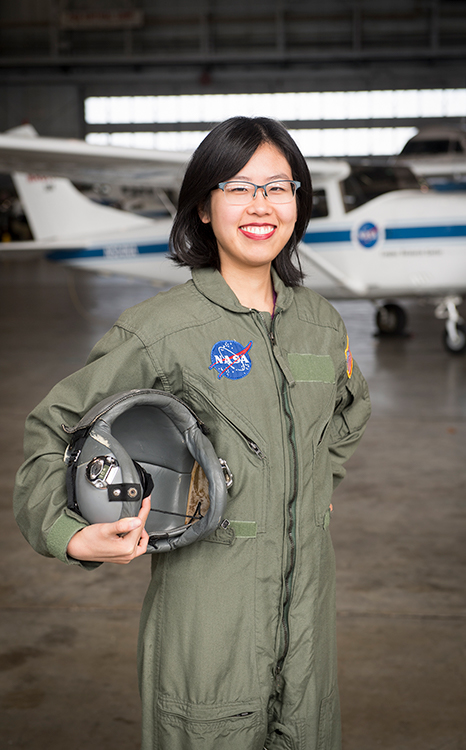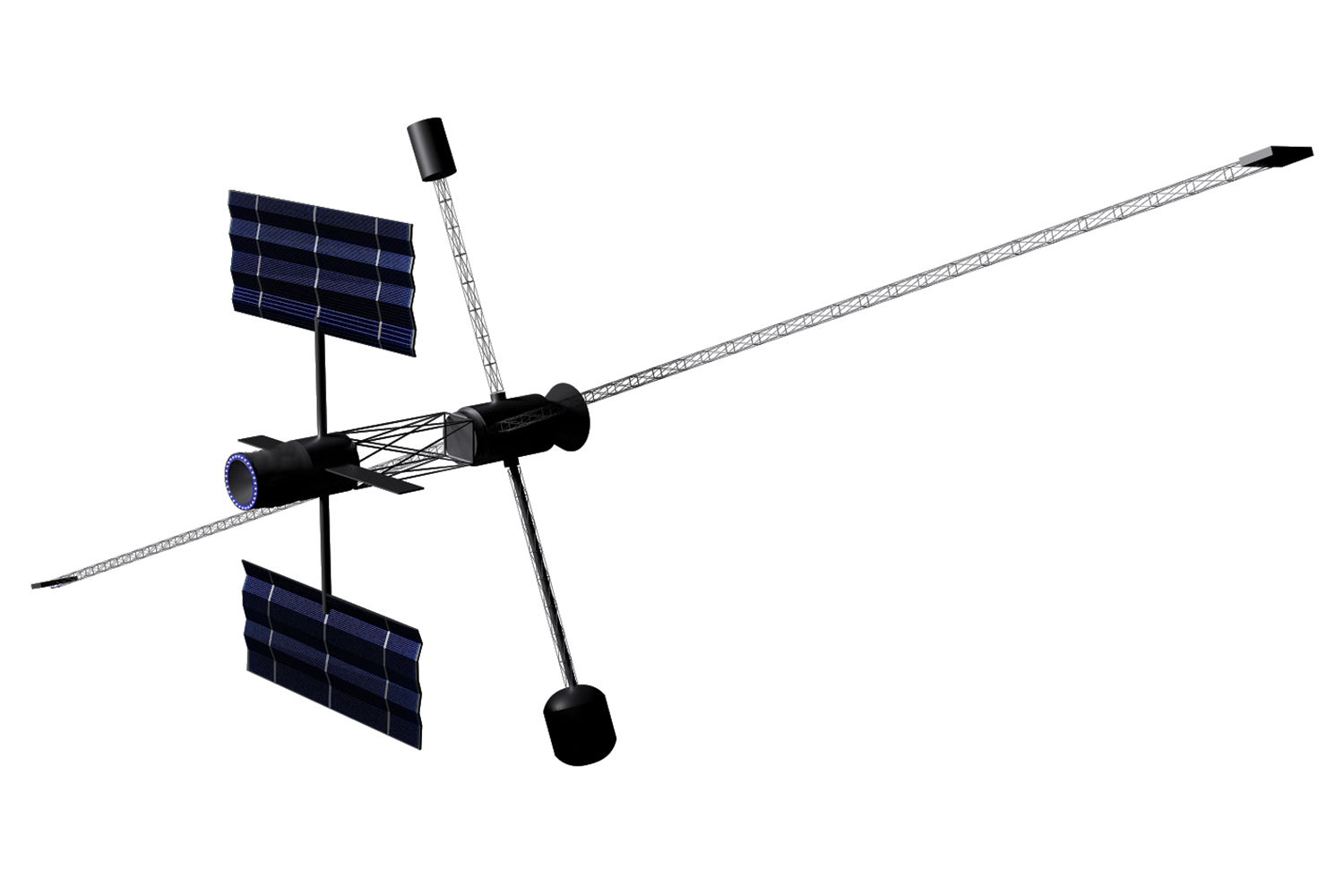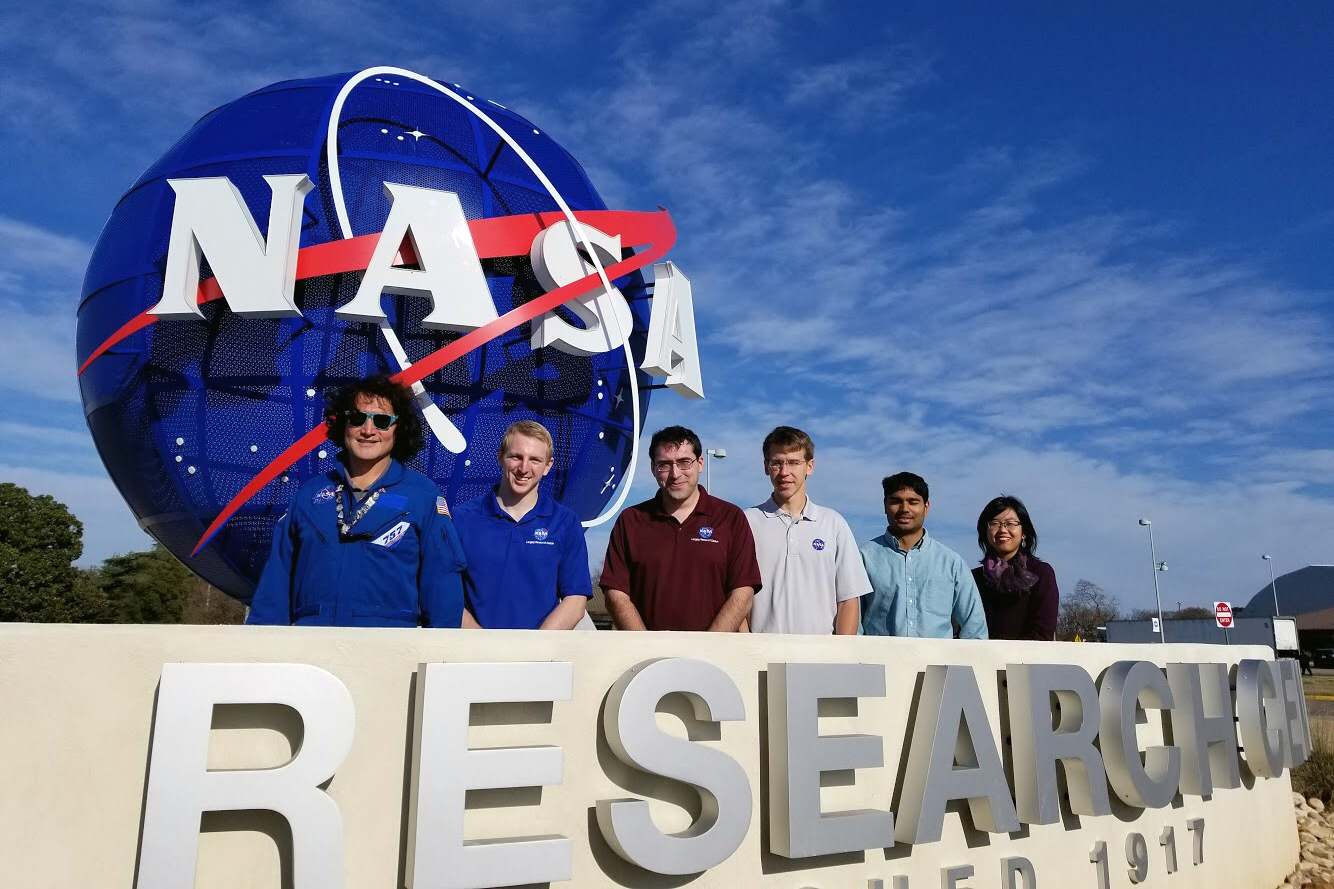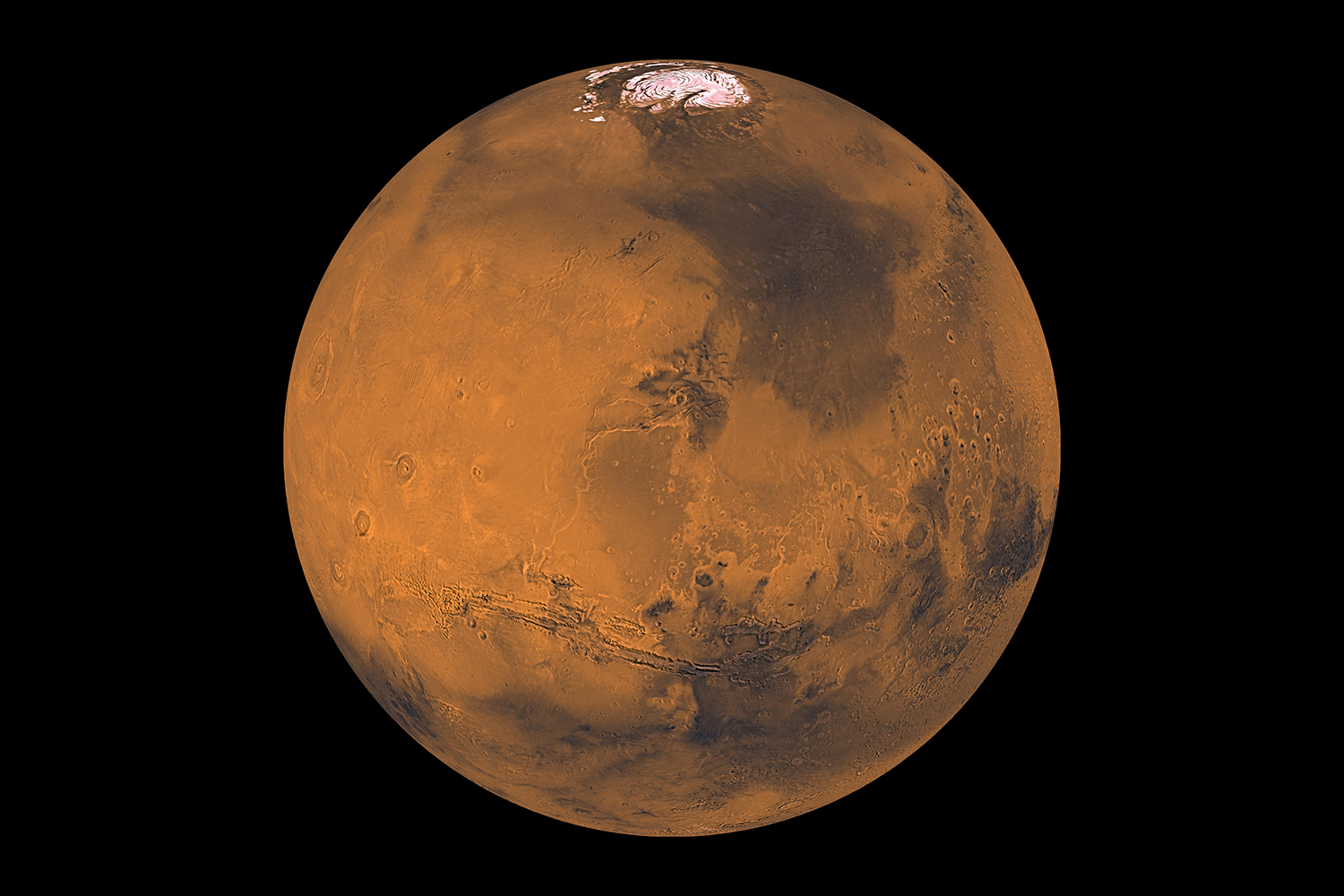“What did you do this summer?”
For most students, planning a mission to Mars is not on the list of possible answers to that classic question. However, that is exactly what University of Virginia student Lucia Tian did.
Tian, who took a year off from classes to complete two semester-long internships and a summer internship with NASA, spent part of her summer finalizing designs for an artificial gravity spacecraft that could ferry humans between Earth and Mars. She presented her team’s designs to a panel of judges from NASA and the aerospace industry in Cocoa Beach, Florida last week as part of the space agency’s 2018 student design competition, called the Revolutionary Aerospace Systems Concepts Academic Linkage, or RASC-AL.

UVA student Lucia Tian spent the fall and spring semesters at NASA Langley Research Center in Hampton, and is spending this summer at NASA’s Kennedy Space Center in Merritt Island, Florida (Photo courtesy Lucia Tian)
The Mars transporter is not the only futuristic project Tian has completed with NASA this year. The fourth-year computer science and astrophysics student has helped improve an app connecting pilots with flight simulators for aircraft safety experiments, built geofencing software to control drones, and worked on an electrodynamic dust shield that can protect spacecraft during landings on the moon, Mars or even asteroids.
For Tian, who dreams of becoming an astronaut, every project is born of a nearly lifelong fascination with the universe.
“I have always wanted to study space,” said Tian, who worked at both NASA’s Langley Research Center and the Kennedy Space Center this year. “I didn’t discover the word ‘astrophysics’ until middle school, but when I did, it felt like I found a part of myself.”
The RASC-AL design competition asks teams of undergraduate and graduate students to tackle big challenges critical to human space exploration. This year, teams chose one of four design tasks: a reusable hybrid propulsion system to transfer people and cargo between the moon’s orbit and Mars; an artificial gravity deep space transport vehicle to complete the same transfer while simulating gravity; a method for refueling these spacecraft in orbit; or a method for recovering samples from the moon’s poles to detect water.
Tian’s team chose to design an artificial gravity deep space transporter that could make the journey to Mars in three years.
“Just saying the challenge sounded so cool, almost like science fiction,” she said.
Her team, composed of fellow interns from her fall internship at NASA’s Langley Research Center, competed as the Colorado School of Mines, the university where their faculty advisor Greg Jackson works. Other team members included Michael Szostak from the Colorado School of Mines; Anthony Hollywood from the Georgia Institute of Technology; Riaz Husain from the University of Texas at San Antonio; and Ethan Krings from the University of Nebraska – Lincoln.
Starting in September, they spent nine months designing their PORG Station (Planetary Orbiter: A Rotational Gravity Station). The final design includes a rotating arm with living quarters on one end and a Mars landing vehicle system on the other. The two ends provide stability as the spacecraft itself rotates, using centripetal acceleration to simulate gravity.

The team designed its spacecraft with solar panels on one end and two main capsules that rotate to simulate gravity. (Image: Riaz Husain)
“The longest people have remained in space so far is about a year. The longer you spend in a zero-gravity environment, the more health problems start to accumulate,” Tian said. “Our system simulates Martian gravity levels, which are about one-third of Earth’s.”
The design uses a combination of methane and liquid oxygen for chemical fuel, allowing astronauts to directly convert the Martian atmosphere, which is 95 percent carbon dioxide, to methane fuel.
In both their 15-page technical report and 30-minute oral presentation, Tian’s team carefully outlined schedules, costs, maintenance and refueling plans, operations requirements and other logistical concerns for their spacecraft. Per competition rules, their design had to have a 15-year lifespan and support at least three trips to and from Mars. It also had to be ready to launch by 2029, fit within NASA’s current and projected fiscal year budgets and utilize technology that either already exists or is being developed.
“You have to be very convincing in showing the funding, the mission timelines and all of the details,” Tian said, because the competition is designed to mimic a real NASA mission as much as possible.
Tian in particular worked on systems supporting human life on board, including the living quarters, food systems, environmental control and life support, air, water and waste management, and protection from space radiation. In her plan, astronauts would be placed in a medically induced state of torpor for repeated cycles of 4-5 days throughout the three-year journey. In torpor, the body temperature is lower and metabolism slows, which would help protect astronauts from space radiation while decreasing their need for food, water and other resources.
Tian’s design also featured an aeroponics crop system, using air and a fine nutrient spray to grow crops on board, and included methods for recycling air, water and solid waste.
“In deep space, it is simply not feasible to resupply often,” Tian said. “You have to recycle everything.”

Tian, far right, and fellow interns at NASA’s Langley Research Center. (Photo courtesy Lucia Tian)
The team bested about 50 entries to make the final competition, which included 14 teams from around the country. Though they did not win that last competition, they received a lot of positive feedback from the judges and earned an award for their comprehensive review of research literature.
Even more rewarding, though, was knowing that NASA might use some of the team’s ideas as the agency works to put an astronaut on Mars.
“NASA engineers always want to see fresh designs with out-of-the-box thinking,” Tian said. “They could integrate those into their own mission designs.”
The experience was also invaluable for Tian’s own mission – becoming an astronaut.
“That is my ultimate dream,” she said.
Already, she has sought advice from former astronaut Kathryn C. Thornton, who now directs UVA’s aerospace engineering program.
“She had a lot of great advice that really made me think,” Tian said.

When she first walked into Thornton’s office, Tian noticed that the professor, a veteran of four space flights, had a Hubble Space Telescope image above her desk, called the Hubble Deep Field. Tian calls it her favorite picture ever taken.
“Astronomers pointed the telescope at a seemingly dark, empty corner of the sky and came away with a picture absolutely overflowing with pinpricks of light, each one not a star but an entire galaxy,” she said. “It’s incredibly beautiful and humbling.”
Noticing the student looking at it, Thornton told her that different students have different reactions to the picture. The ones who are most passionate about engineering think about the technology it would take to get the image; the ones who are most passionate about astrophysics are amazed at all that is out there, both discovered and undiscovered.
“I think I am still an astrophysicist at heart,” Tian said.
With that in mind, Tian hopes to use her final year at UVA to continue to explore astrophysics and prepare for both possible graduate work and an eventual career in space exploration, whether as an astronaut or as a physicist or astronautical engineer.
“I started thinking about working on space missions early on as a college student,” she said. “No matter what, I know I want to be working on something related to that goal.”
Media Contact
Article Information
June 27, 2018
/content/heres-one-way-get-mars-according-uva-student-and-nasa-intern

